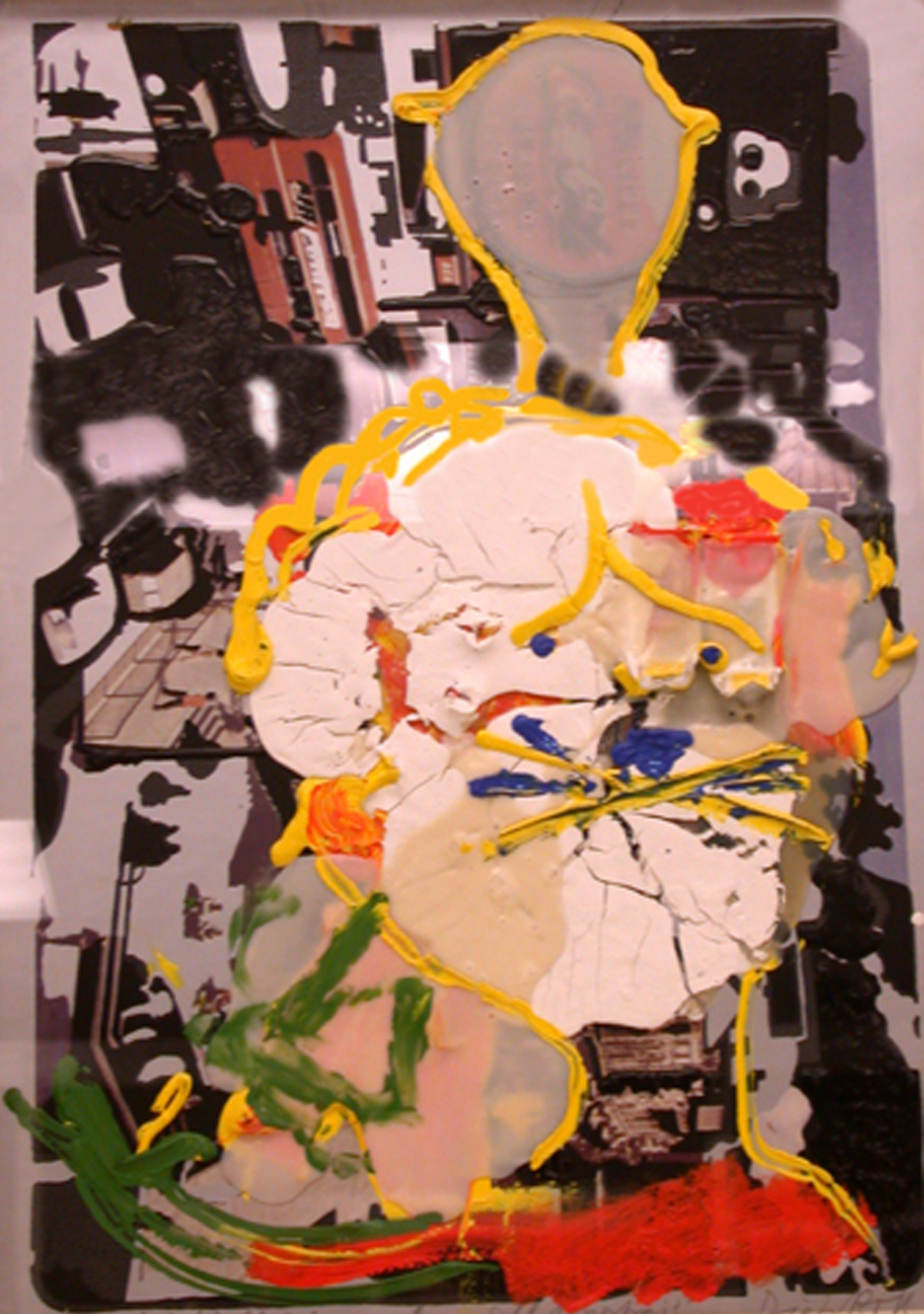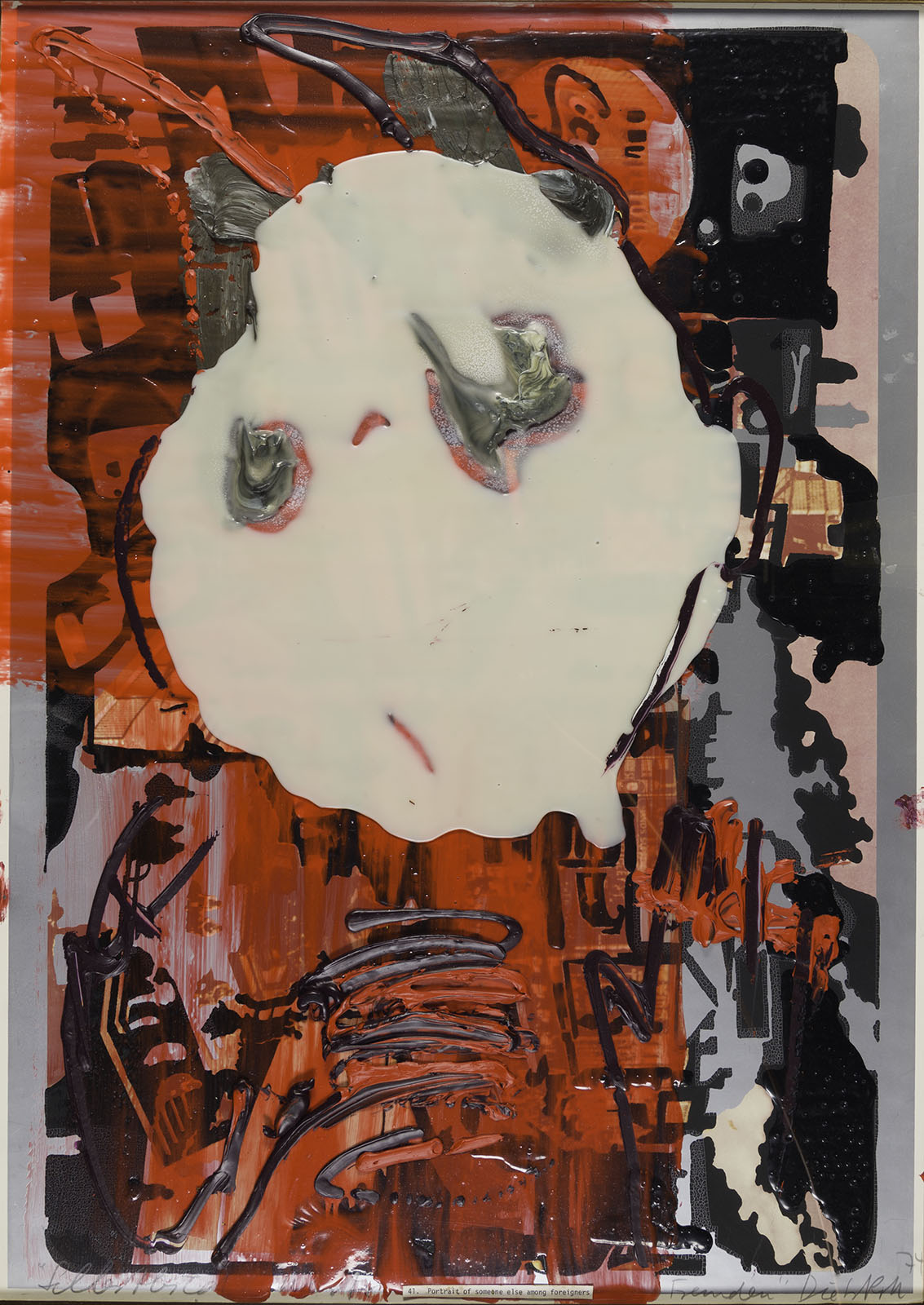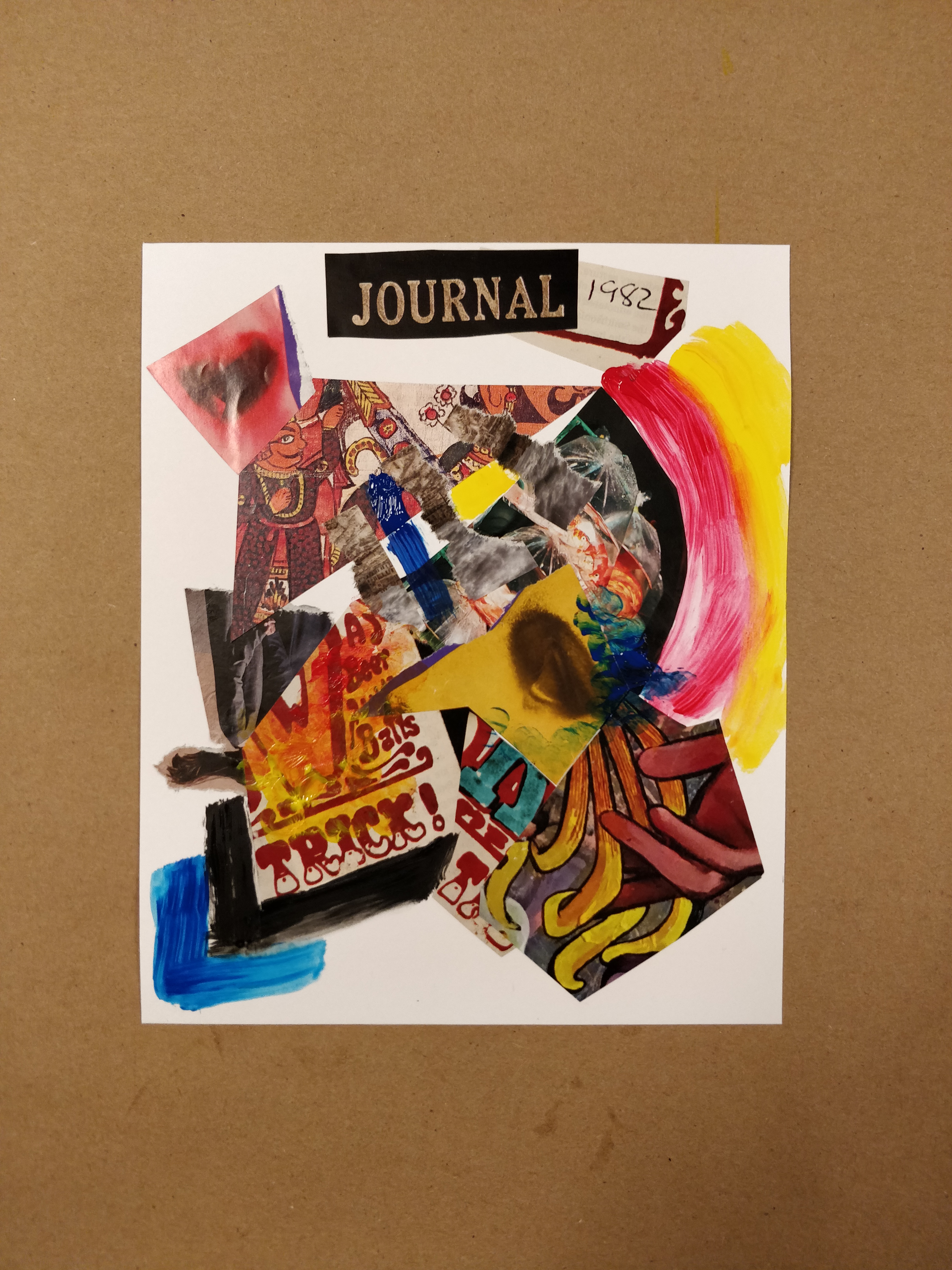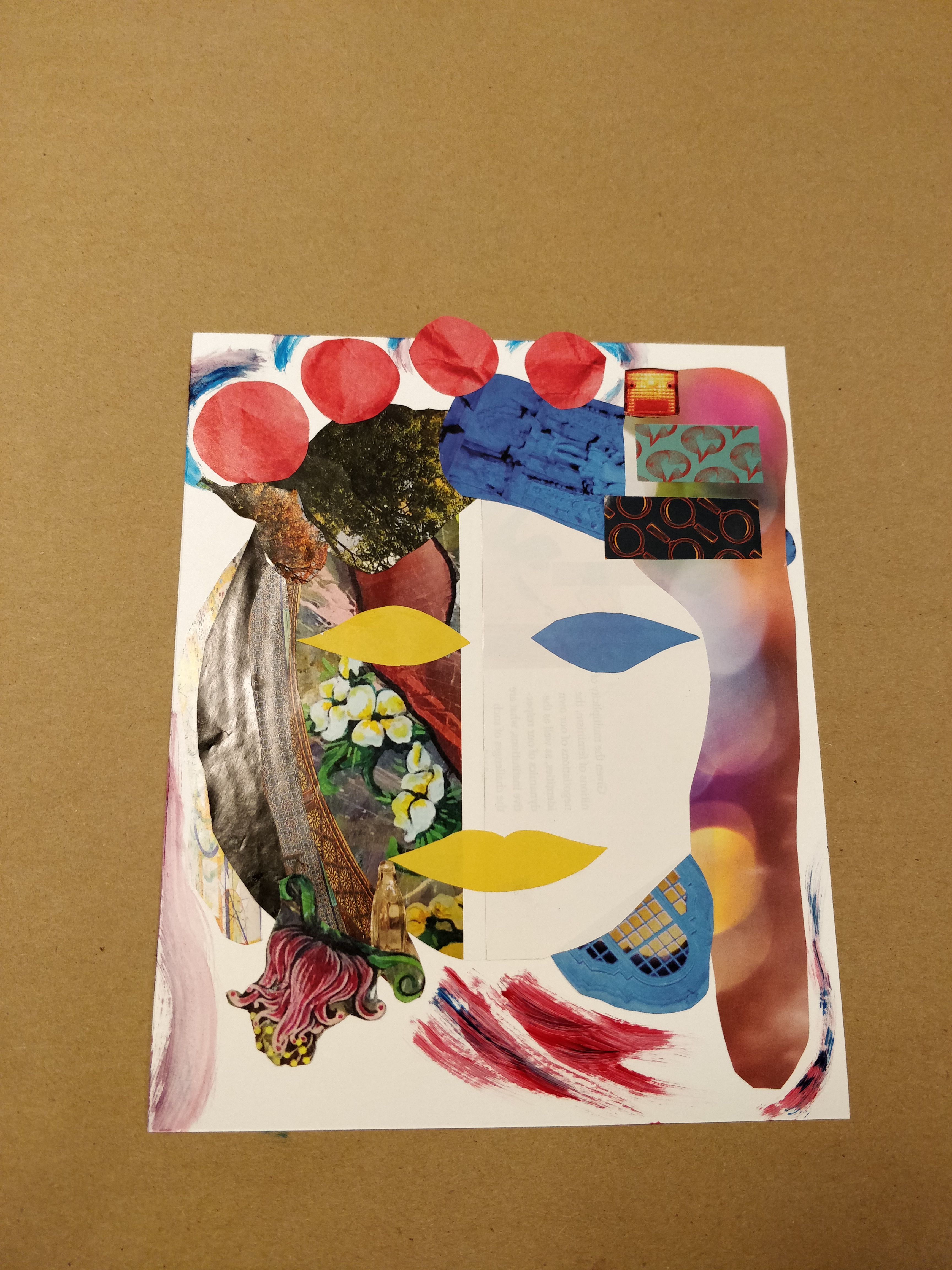The Swiss painter, Dieter Roth (1930-1998) created a series of self-portraits during the 1970s. In these works, he experimented with several mediums and compositions to depict himself in different situations. The two works by Roth included in the exhibition, Being Human: Portraits from the Permanent Collection, are great examples of self-portraits from the same series that portray the artist in two similar situations but feeling different emotions in each one. These differences are brought out by Roth’s clever use of materials and colors to create contrasting moods.
Let’s observe:
Take a closer look at the two self-portraits by Dieter Roth: Picture of a Self-Portrait (1974) and Someone Among Foreigners (1974). Compare both these images:


- What do you notice about these two self-portraits? Look at the background, colors, different mediums, and compositions of the work. What kind of similarities or differences do you see in them?
- When you look at these portraits, how do they make you feel? Do you think Roth was feeling the same way when he created these works?
Materials:
- White or colored construction paper
- Pages from magazines, newspapers, and other collage materials
- Acrylic paints
- Glue
- Paintbrushes
- Scissors
Let’s stop and think:
Remember that this abstract self-portrait is the best representation of yourself, without any of your facial features! Consider a few things before you start creating your self-portrait:
- What size would you like your portrait to be?
- What colors would you like to use for your background and the portrait?
- Would you want to use any collage materials apart from paper (like fabric, cardboard, tape, etc.)?
- What details would you like to add to your self-portrait that best reflect you?

Steps:
1. Gather your collage materials and start cutting shapes out of it. They can be shapes of different sizes, forms, and colors.
2. Use a white or colored construction paper as a base and start arranging the cutout shapes on it. Play around with your composition! Try different variations until you find a composition that represents you best.

Steps:
3. After deciding on the composition, stick your collage down onto your base paper with glue.

Steps:
4. Using acrylic paints, paint details on your self-portrait collage. These can be any small or large details to give your self-portrait its finishing touches!
Here’s some examples of self-portrait collages we made!


Glossary
Abstract art: A form of art that does not represent an accurate depiction of reality, but instead uses shapes, colors, forms, and gestural marks to create its effect.
Collage: Both the technique and the resulting work of art in which pieces of paper, photographs, fabric and other materials are arranged and stuck down onto a base surface.
Composition: An arrangement of visual elements within a work of art such that their relationship to each other is satisfactory to the artist and the viewer.
Self-portrait: A representation of the artist that is made by the artist themselves.
